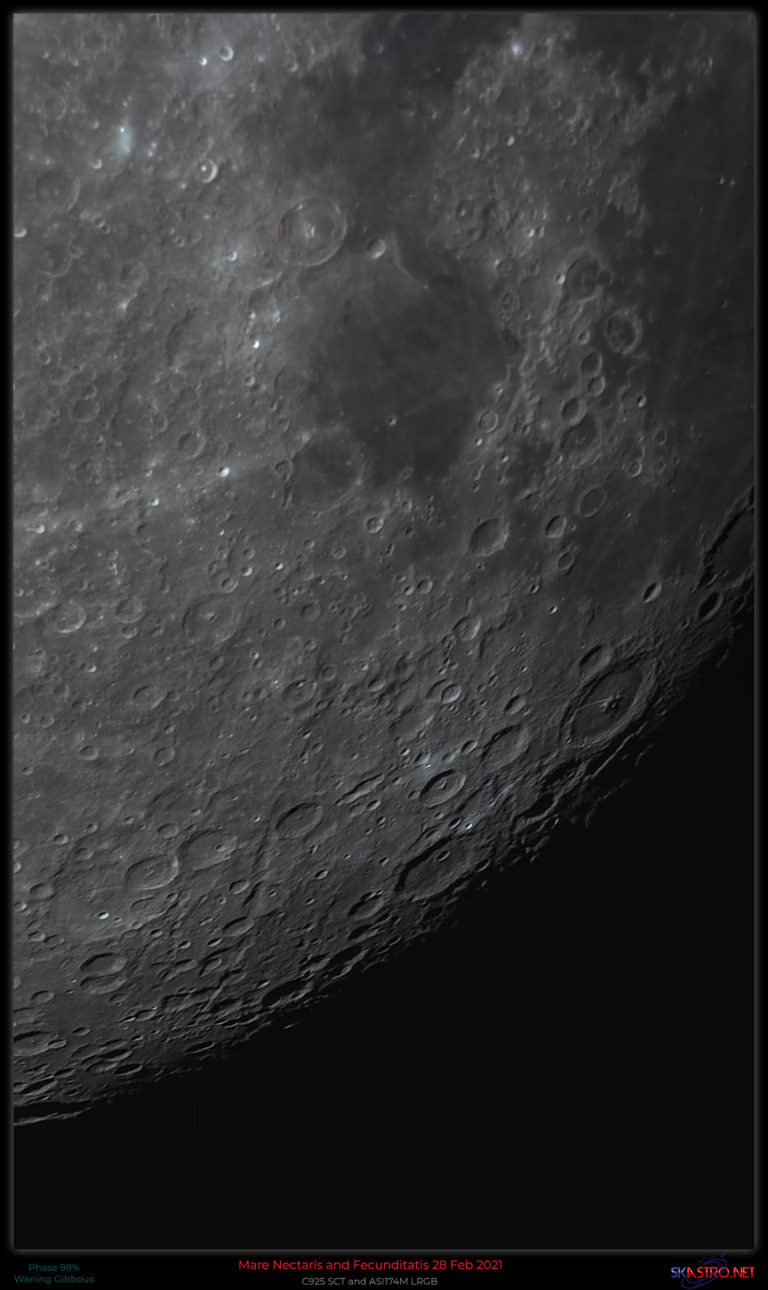One of the most important and overlooked matters to consider to prevent untold frustration in observational and imaging astronomy is being able to easily, quickly and reliably find the object you want to observe or image. The smaller the field of view of the telescope/camera/eyepiece combination, the more difficult and important this becomes. When you factor in the fact that the subject may not yet be in proper focus it is clear that just pointing the telescope in the direction of the moon, planet or object and hoping that it will be in the field of view (FoV) is a forlorn hope and leads to great frustration whilst you are hunting around trying to get the object both in focus and in the FoV. I’m a mild natured person and even I have been found cursing at the EP on many occasion trying to do this! Red Dot Finder…
I have owned my Celestron C925 SCT telescope for many years but have only ever used it for visual purposes. I have always preferred the use of refractors for imaging. However, I have started to want to get much greater detail in my lunar images, having been bitten by the lunar imaging bug. I had some significant issues getting the C925 properly collimated, accurate enough for imaging purposes, a story I discuss here. After successfully collimating the scope these are my first two pictures taken with The Moon quite low down in the East with some slight mistiness. Mare Nectaris Region Above is the best 15% of 5000 frames in each of Red, Green and Blue. I collected the data with Sharpcap with ASI174M camera with Baader RGB filters. I created the master R,G,B files with PlanetarySystem Stacker and then used PixInsight and Photoshop to develop. Copernicus Above is Copernicus…
The Moon on 25th January 2021 at 89% in Gemini. It was freezing cold, snow on the ground with reasonable skies and seeing conditions. The full disk below is the best 20% in each of the R,G and B filters out of 10000 frames. I used Planetary System Stacker software to process the raw .SER files from the camera and then used PixInsight and Photoshop for processing. I used my TEC140 refractor and ASI174M high speed camera with Baader RGB filters. I no longer capture a separate luminance channel and instead make a synthetic luminance from the RGB data and then sharpen that and use as a luminance layer in Photoshop. RGB Moon at 81%, 25 January 2021 For the two images below I used my Televue 2″ Powermate X2 in order to double the TEC140 telescope’s focal length to 1960mm. The processing and frame set is the same as…
After months and months of cloud, The Moon shone down on us in Nottinghamshire on the 23rd January from high up in the sky in Gemini (my daughter’s birthday!) It was at a phase of 74% waxing gibbous. I used my TEC140 scope, ASI174M camera and Baader RGB filters. The full disk image was with the telescope at its native focal length and with the two closer up views at the bottom I used a 2″ Televue Powermate x2 in front of the filter wheel/camera assembly. RGB Disk at 75% Waxing Gibbous Above is best 25% of 20000 frames in each of RGB. Copernicus and The Apennines After the full disk image I inserted the Televue 2″ x2 Powermate to get a more zoomed in view. Above is the Apennine Mountains and Copernicus crater to the left of centre. Best 15% of 5000 frames in LRGB. Clavius and Tycho Craters…
Easily visible with the naked eye, M45, The Pleiades – sometimes referred to as The Seven Sisters, is a well known and famous Open Cluster in the constellation of Taurus. IT has been known since ancient times due to its prominence. The cluster is located between 450-500 light years away and contains several hundreds member stars. The cluster is quite young by astronomy standards and the cluster is moving through a cloud of gas which is easily visible in images and can been seen visually in a dark sky as well. M45 – THe Pleiades Technical Details Imaged from my backyard in Nottingham on Saturday 9th January 2021 when high to The South. A meridian flip occurred half way through the data acquisition. I used my Takahashi FSQ85 refractor and QHY268C One Shot Colour camera. The image was created with quite a small data set of only 38 x 180s…





